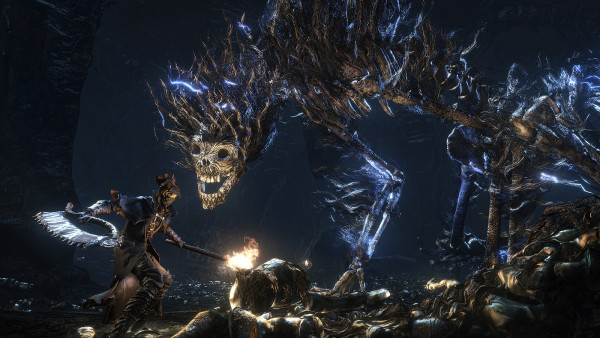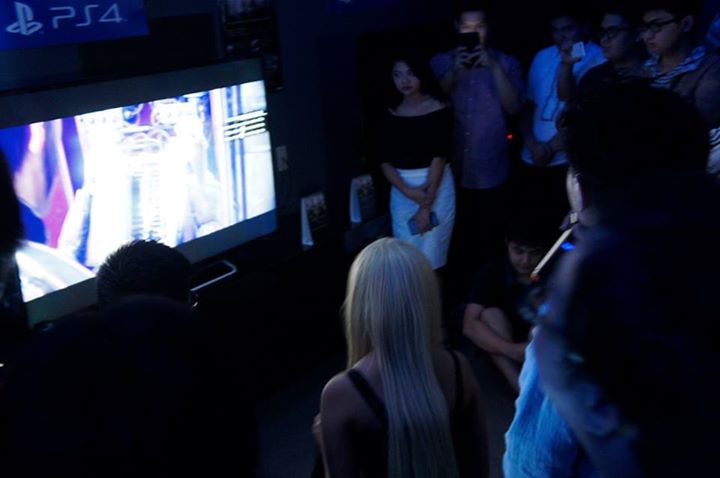Review: Bloodborne
/ The moment we saw the first trailer, we already knew Bloodborne was going to be something special. Bloodborne is the latest action role-playing creation from Hidetaka Miyazaki. Miyazaki made a name for himself beginning with Demon Souls on the Playstation 3 – a dark, foreboding fantasy RPG which grew in infamy for being unforgivingly difficult, a game where death was a regular occurrence, to be made part of the overall gameplay experience. Add to this a return to old school gaming mechanic, an amazing atmosphere, merciless boss battles, and a unique multiplayer system, and you had the making of a classic.
The moment we saw the first trailer, we already knew Bloodborne was going to be something special. Bloodborne is the latest action role-playing creation from Hidetaka Miyazaki. Miyazaki made a name for himself beginning with Demon Souls on the Playstation 3 – a dark, foreboding fantasy RPG which grew in infamy for being unforgivingly difficult, a game where death was a regular occurrence, to be made part of the overall gameplay experience. Add to this a return to old school gaming mechanic, an amazing atmosphere, merciless boss battles, and a unique multiplayer system, and you had the making of a classic.
It’s no secret – we are BIG fans of Miyazaki’s work here at TMG, and Bloodborne carries on his vision to the Playstation 4 in style; It’s a brutal, terrifying, and absolutely seductive offering, with enough differences to set itself apart as a truly next generation version of its predecessors while maintaining just enough familiarity to pull back in those already well versed in his works.
That said, the game isn’t perfect, and while we have to objectively point out its flaws, none of them really detracted from the overall experience. So let’s jump into it shall we?
Bloodborne takes place, for the most part, in a Victorian-era dystopia known as Yarnham. This is a city steeped in religious imagery and gothic architecture, whose residents fearfully lock themselves inside their homes at night as werewolves, rabid dogs, mad cultists and other dreadful creatures of the night come out to stalk the streets.
It is into this that you are thrust as a newly inducted Hunter – one of the chosen few who hunts the evils of the night. It’s a setting that combines the best of Bram Stoker, Mary Shelley and HP Lovecraft all rolled into one, and it is lovingly realized. Imagine every creepy church, cemetery, house, and building you’ve ever seen all within a single city. This is a city of constant dread and horror, yet also one of incredible beauty.
Graphically, Bloodborne is absolutely gorgeous. Environments are well detailed and interesting, every brick and tombstone lovingly rendered; indeed, moving the camera up close lets you fully appreciate the work that has gone into making Yarnham feel like the nightmare that it is, with small details seamlessly popping into view as you close in to examine the environment. Even details on character clothes and weapons are all fully realized, all of it wonderfully lit by a giant moon in the sky that gradually turns red and foreboding as you progress through the game.
Monsters and creatures are equally lovingly crafted and animated, oozing personality even with little to no dialogue attached. Almost every denizen of Yarnham you encounter is hostile, and all are equally deadly. Even the lowliest cultist can quickly cut you down if you aren’t careful. Combat in the game doesn’t stray too much from the set formula of previous Soul’s games and adds a few interesting elements to the mix, so those familiar with the previous titles should feel right at home, with one exception – there are no shields in the game anymore (actually there is one shield, but it’s so pathetically weak that it was certainly only put into the game as some sort of cruel joke.) The lack of a shield means you now need to be quick on your toes to react appropriately to your opponent’s moves, dodging and weaving in and out of range while taking shots of your own when the opportunity allows. The result is combat that is much more reaction heavy; you’ll need to be paying attention here if you want to survive.
The game rewards you for taking risks however – retaliating against your opponent within a short time frame after being hit can regenerate the health you lost, leading to an interesting dynamic where you need to temper your patience with bravery. It’s an excellent dynamic that, coupled with the lack of a shield, leads to some exciting combat encounters.
We cannot discuss combat further without tackling the issue of death. And let’s be honest here: No matter how good you think a player you are, you will die, several times, as you play through Bloodborne. Dying is obviously something you want to avoid, but thankfully because of Bloodborne’s excellent combat and design, it almost never feels unfair – more often than not, you die because of something you did or failed to do, and the game forces you to learn from your mistakes. It can get frustrating at times, but there was never a point where I felt like I just wanted to give up – rather I was spurred on forward more to keep trying until I got it right.
The most common area of death always tends to be with the boss encounters, and Bloodborne has some of the most memorable boss encounters to date in any video game. Some bosses are huge monstrosities several stories high, slow and lumbering but with incredible power behind each swing. Some are humanoid sized, quick, agile and deadly – you’ll need to be patient, watching for patterns and openings in order to succeed. Defeating a boss in Bloodborne always feels like an achievement, and it’s once again a testament to just how tight the combat design really is. The leveling system is also quite robust, despite being very simple, and allows for a lot of experimentation – a clear sign that this game was meant to be experienced multiple time over.
With so much good in this game, it’s so easy to overlook Bloodborne’ shortcomings, but the truth is it isn't a perfect game. Interpreting your character statistics can be quite a chore without an external reference, and the story of the game is not always communicated very well throughout. Yes these are relatively minor in the overall scheme of things. While it may not have the flash or pizazz of your traditional AAA title, the quality and care put into crafting it is clear – and many companies could only ever hope to come close. The bottom line is, if you own a Playstation 4, you need to play Bloodborne. It is easily the best Playstation 4 exclusive to date, and so far one of the best contenders for Game of the Year.
Willem went through the game completely offline in order to have a blind playthrough experience.
Online Features
Carlos' Note: The online aspect of Bloodborne is greatly similar to previous Souls games. Messages are left on the ground for players to warn them of incoming dangers or an item they could possibly miss. There are also pools of blood which shows another players last moments before death. Player vs Player is present in Bloodborne but is taken a few notches down compared to previous Souls games. Using the item the Beckoning Bell (co-op play) or the Sinister Bell (Invading players) will trigger online play. Player vs Player seems to take a backseat this time around since you can only invade in certain areas that have the bell bearer and if a player used the Beckoning Bell.
Chalice Dungeons are considered the end-game in Bloodborne and gives players the ability to craft dungeons through items found in the game. The difficulty of each dungeons don't scale with the player's level but the difficulty and length of the level can be increased
depending on the items used to create the dungeon. It's a great addition to the Souls formula and added extra hours of gameplay since there are bosses and items exclusive to chalice dungeons.
Reviewed by: Willem Den Toom Developer: From Software Release Date: March 24, 2015 Platform: PlayStation 4 Final Game Time: 53 Hours










